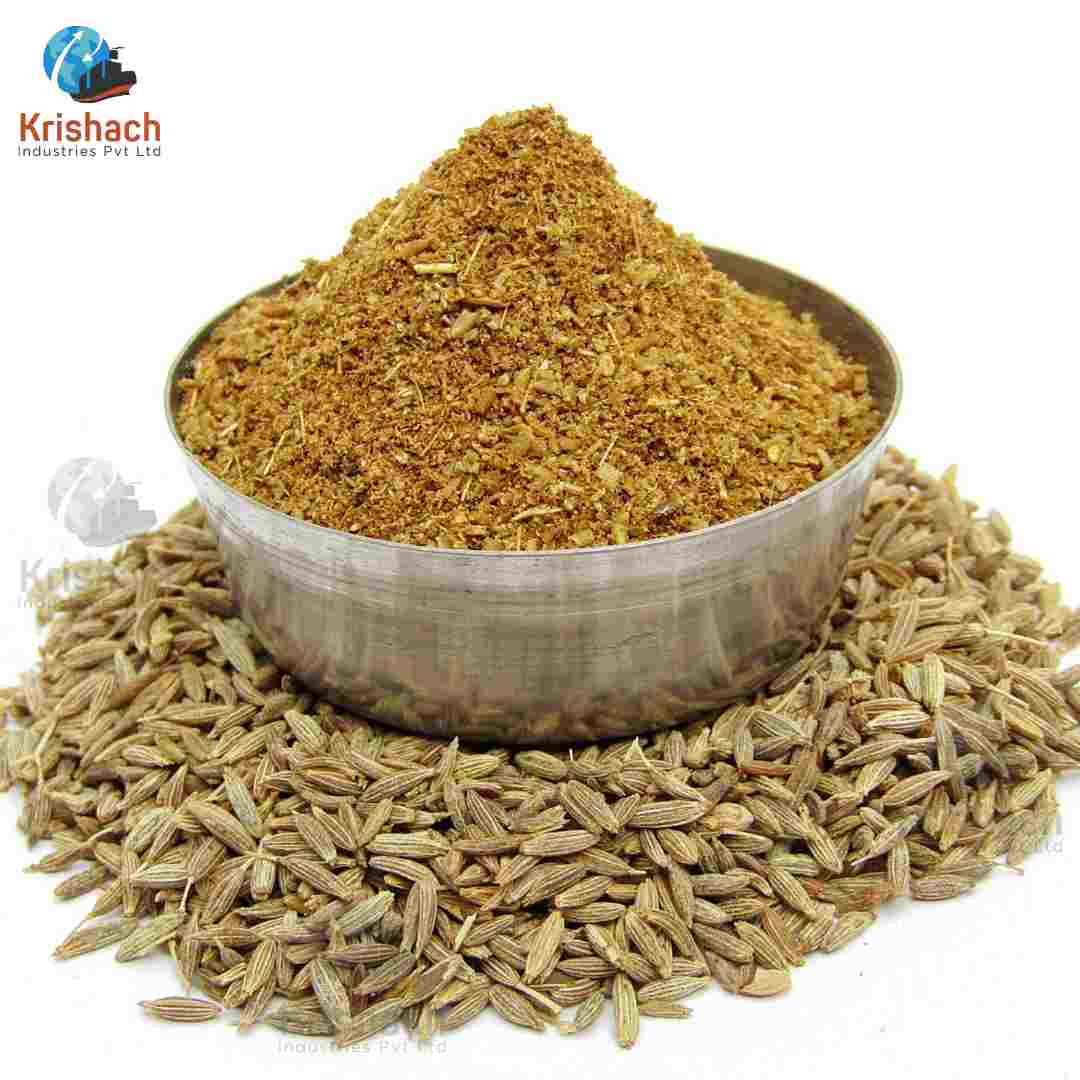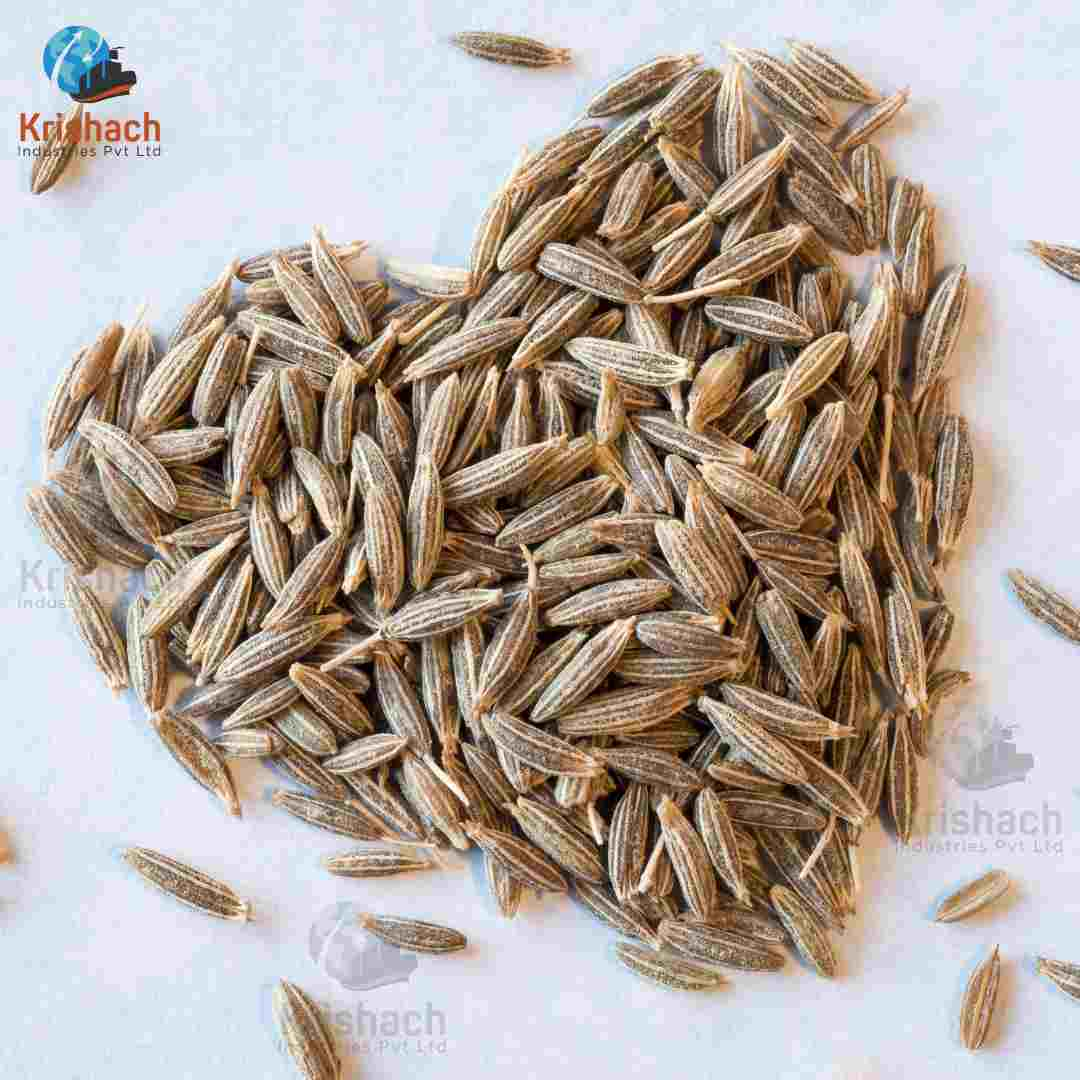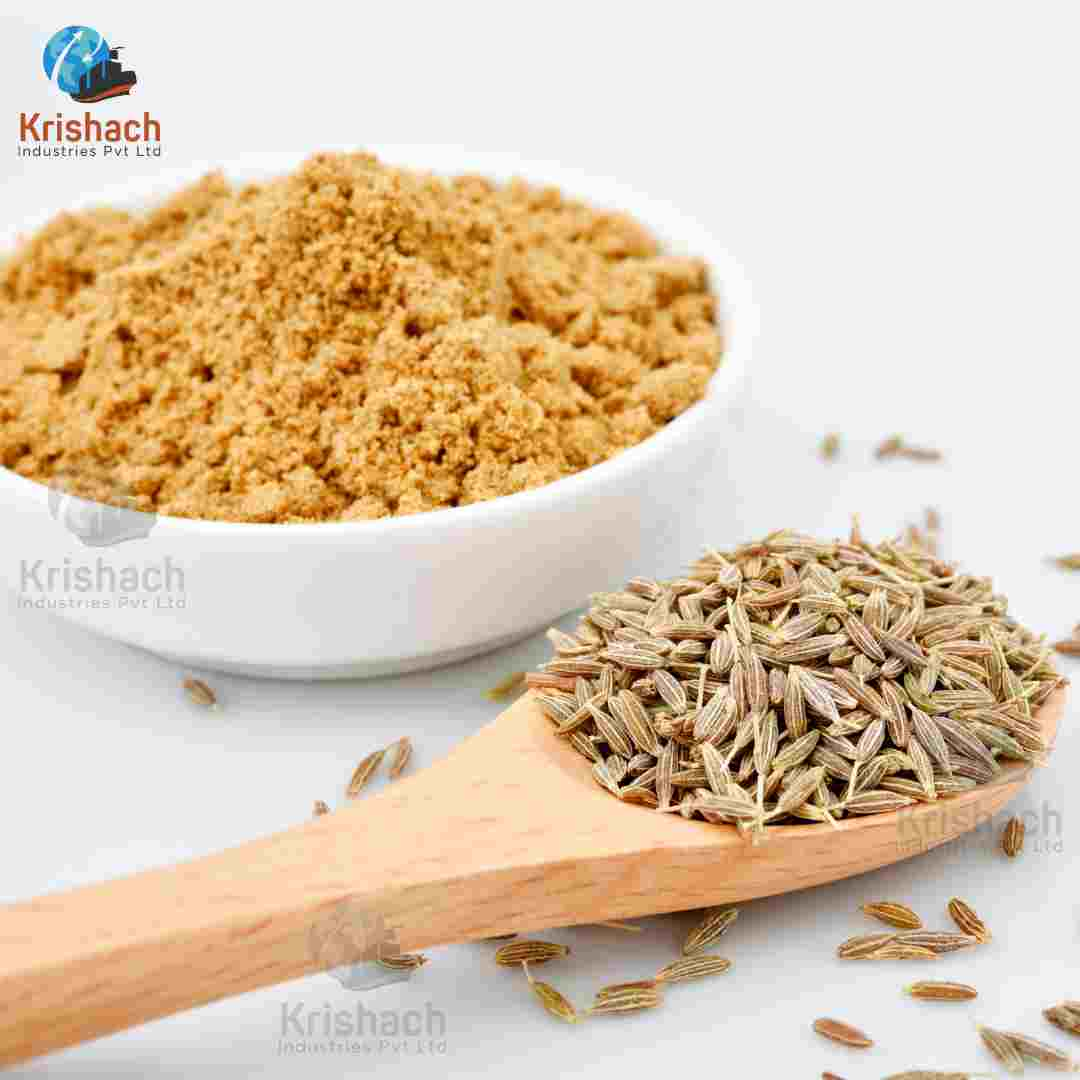Cumin Seeds Exporter from India | Wholesale Supplier – Krishach Industries
Krishach Industries Pvt. Ltd. proudly offers high-quality cumin seeds (from the plant Cuminum cyminum) are small, elongated seeds commonly used as a spice in various cuisines. They are a key ingredient in many global culinary traditions, including Indian, Middle Eastern, Latin American, and North African dishes.
Krishach Industries is a trusted cumin seeds exporter based in Gujarat, India. We supply premium-quality whole and ground cumin seeds globally with certified packaging, timely delivery, and competitive prices.
Key Characteristics of Cumin Seeds:
Shape: Small, elongated, oval with a slight curve
Size: 3–6 mm in length
Texture: Fine ridges running lengthwise
Color: Light to dark brown; may have greenish or grayish hues
Aroma: Warm, spicy, and earthy
Flavor: Earthy, nutty, slightly bitter with a peppery finish
Available: Whole and ground forms
Toasted cumin seeds release a deeper, more intense aroma and flavor—ideal for cooking and blending.
Specification:
Culinary Uses & Applications
Cumin seeds and cumin powder are essential in:
Indian curries, lentils, and biryanis
Middle Eastern hummus, couscous, and spice blends
Mexican chili, tacos, and stews
Moroccan tagines and harissa
They are also used in:
Spice blends: Garam masala, curry powder, taco seasoning
Snacks & bakery items: Spiced crackers, roasted nuts
Health drinks and herbal teas
Health Benefits
Cumin seeds are known for their medicinal and nutritional value:
Rich in iron and antioxidants
Aid digestion and reduce bloating
May help regulate blood sugar and support immunity
Traditionally used in Ayurvedic and Unani medicine
Cultivation Season in India
Sowing: October–November (Rabi Season)
Harvesting:February–March
Primary Regions: Gujarat and Rajasthan (leading producers of cumin in India)
Our Services
Our Commitment to Quality
Reliable Sourcing
We partner with certified farms in Gujarat and Rajasthan to ensure a consistent supply of export-grade cumin.
Premium Quality Assurance
All cumin seeds undergo rigorous testing and comply with:
FSSAI
ISO
HACCP
USDA Organic (if applicable)
Cleaning, Grading & Sorting
Our facilities ensure 99.9% purity using:
Pre-cleaning
Gravity separators
Sortex grading
Metal detection
Grinding for Powder
Cumin seeds are ground in hygienic environments and sieved for a uniform, fine consistency.
Packaging, Shipping & Delivery
Packaging Options for Export
We offer customized, food-safe, moisture-resistant packaging:
For Bulk Orders (25–40 kg):
PP Woven Bags (optional lamination)
Multi-wall Kraft Paper Bags
Vacuum-Sealed Bulk Packs
For Retail Packs (100g – 5kg):
Laminated Stand-up Pouches
Zip-lock or Resealable Pouches
PET / PE / BOPP Food-Grade Bags
Additional:
All packs are loaded into strong corrugated cartons
Palletization & shrink wrapping for safe global transit
Export Documentation & Shipping
We handle all export-related documentation, including:
Phytosanitary Certificate
Certificate of Origin
Fumigation & Health Certificates
Customs & Packaging Labels as per buyer requirement
Shipping Options:
Air, Sea, or Land freight
Support for FOB, CIF, DDP incoterms
Fast dispatch from major Indian ports (Mundra, Kandla)
























